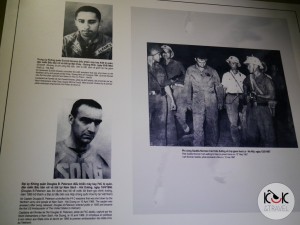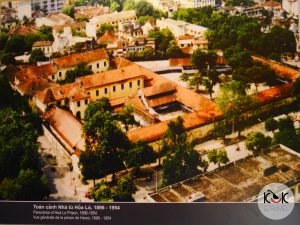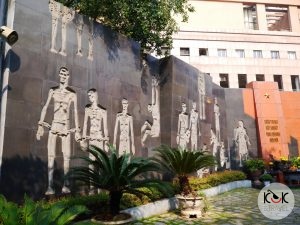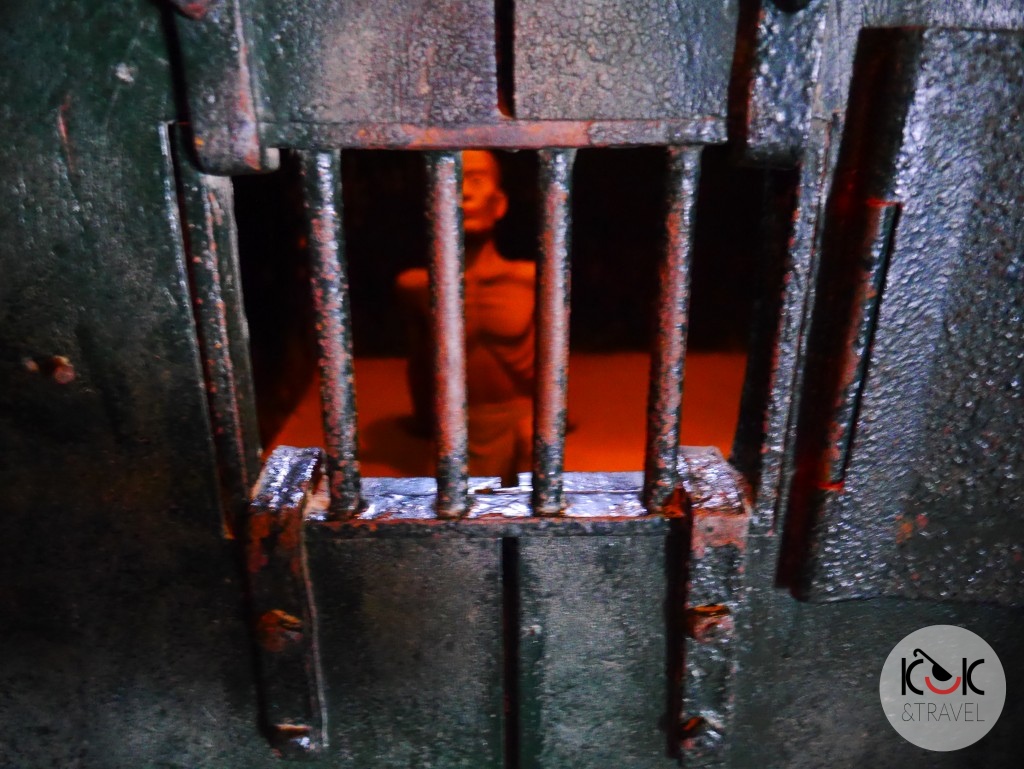
Hoa Lo Prison in Hanoi was built by the French in 1896 in Phu Khanh village. The building was one of the largest prisons built by French colonialists in Indochina. They jailed political revolutionists and patriots there. Many leaders of the government and the Vietnamese Communist Party were imprisoned there. From 1964 to 1973 Hoa Lo Prison confined American pilots shot down or arrested during the bombing of northern Vietnam. The most shocking for us was the fact that the prison got named ‘’Hanoi Hilton Hotel’’ by its American inmates. Sharing with you our feelings about it in a moment.
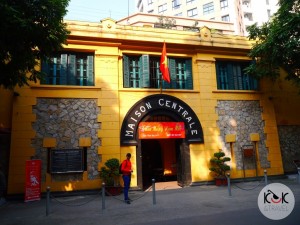
You enter the Hoa Lo prison, and first you are directed to its ‘darkest’ corners: you can see solitary confinement cells for the worst prisoners who broke the regulations of the prison, the collective cells for women and death row cells. Cachot (dungeon area) was ”hell of the hell” , dungeon was dark and narrow. Prisoners were kept separately, put in stocks, had to eat and relieve themselves on the spot. All the prisoners confined here were puffed with oedema, their eyes were clouded over and their bodies were covered with scabies caused by the lack of air and light. Death row cells were completeley isolated from other cells of Hoa Lo Prison to prevent death row inmates from communicating with the outside. Prisoners here were shackled all day long not even freed to use the toilet. The cell door was opened just twice each day for jail guards to bring meals and water to the inmates. According to the prison regulations, prisoners who were sentenced to death were detained here for a minimum of 10 months from the day of being sentenced in the Criminal Court. In spite of living in the cell and having to deal with the closeness of death, the Vietnamese communists retained the will to fight. They wrote books, compiled materials to broadcast national revolution and composed poems revealing spirits of optimism, patriotism, devotion and contribution to national liberation revolution.
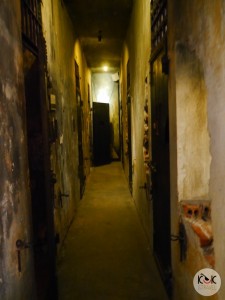
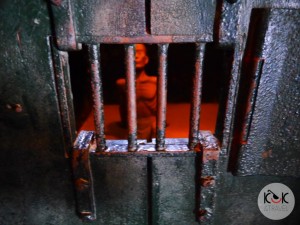
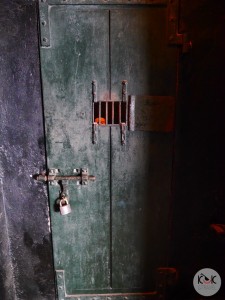
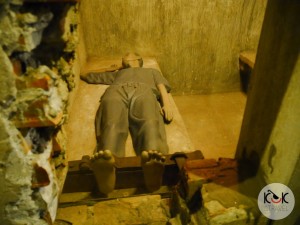
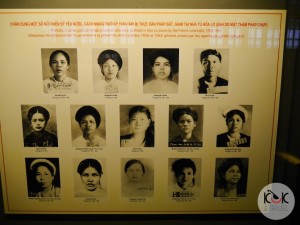
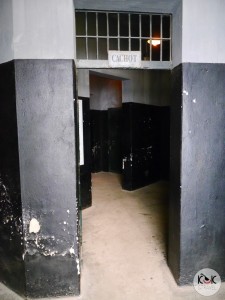
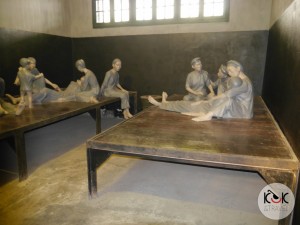
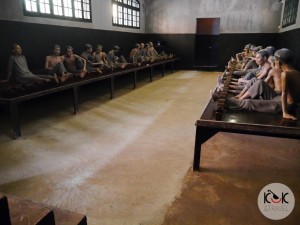
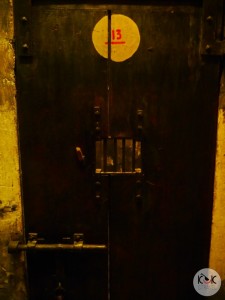
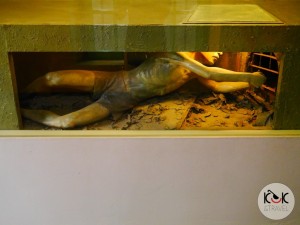
Very soon you will come across a cell number 13, from which one of the prisoners escaped despite the fact that he was shackled in chains .. later you will see a guillotine, the clothes of prisoners, props and myriads of photos.

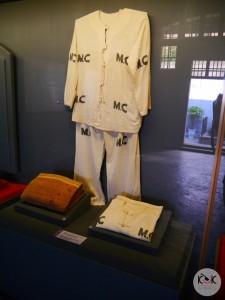


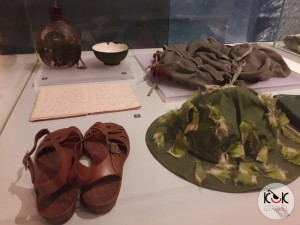
You will go through this dark section of the prison watching documentaries on television screens and learning interesting historical facts. The scenes of cruelty are also shown in the pictures, especially the treatment of the punished prisoners. The below picture illustrates an example: the French colonialists executed and displayed the heads of patriotic soldiers who participated in ‘’Hanoi poisoning’’ case on 8th July 1908.
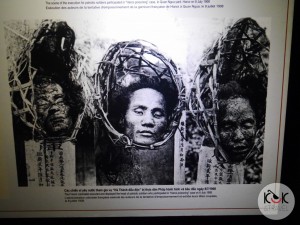
Then you will find yourself even in a more intriguing place, where you will watch a video displaying the cruelty of the Vietnam War. The images of this war known throughout the world dash on the TV screen in one of the visitors’ halls. You will see how schools were being bombarded, how civilians were being killed and naked children wounded, you will see dead bodies, women screaming for help and sobbing out of helplessness. The images can really make one want to cry. We were curious what would be next .. what did Vietnamese people do with the Americans flying down with parachutes ?
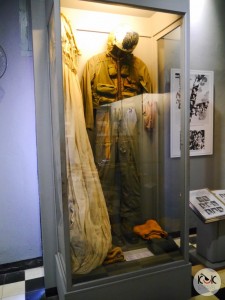
The II Indochina War was one of the cruellest wars in the world. Northern Vietnam, Cambodia and Laos were massacred with countless bombs during that time. When the war finally led to the defeat of Americans in northern Vientam, the President Ho Chi Minh motivated his people to move to the south and continue the battles, which led to the South Vietnamese government’s capitulation and the reunification of Vietnam in 1975. The largest city in the south of the country changed the name from ‘Saigon’ to Ho Chi Minh City.
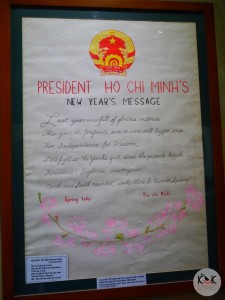
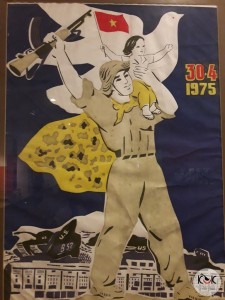
We entered a next room and what could we see there? : lots of photos of American pilots whose lives were saved by the Vietnamese doctors, who were provided the entertainment: basketball, chess, billiards, gym, a library, who were taught the Vietnamese culture, who were making friends with the Vietnames people, who were allowed to have a permanent contact with their families, could call them, send letters, they were also getting pretty good food, cigarettes and other stimulants they wanted, and there is information that the Vietnamese government was spending more money on maintaining an American prisoner rather than on the needs of the poorest Vietnamese people. In one of the documentaries it was stated that the average Vietnamese man lived in those times in worse conditions than an American prisoner in Hoa Lo Prison.
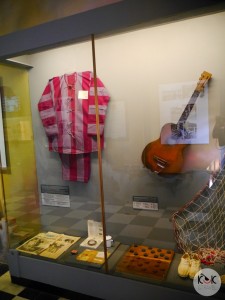
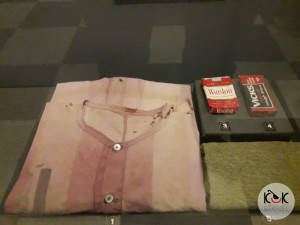
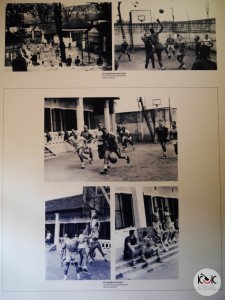
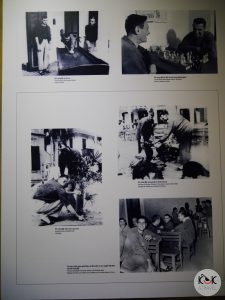
The documentaries presented at the museum illustrate that the Vietnamese wanted to get closer to their biggest enemy, get to know Americans, their culture, way of thinking, and show that people should respect each other. Showing respect towards Americans the Vietnamese claim to have gained also something more: it led to a situation that pilots who contributed to killing many innocent civilians began to feel regret and admitted they had only performed blindly their orders but led to mass atrocities, which would now be a burden on their conscience until the end of their lives.
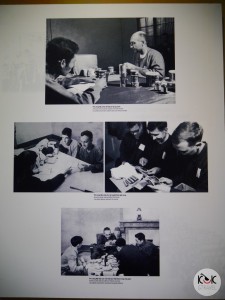
Later you will watch a short documentary showing the Americans released from prison and returning to their homes satisfied not only with the fact that they could see their families, but also satisfied with their stay in the prison, and getting so close to the Vietnamese culture and its friendly people.
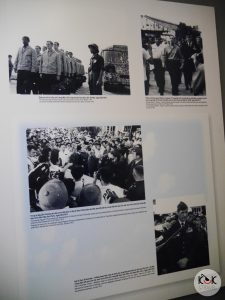
And this is how our visit to the prison ends. The Vietnamese are portrayed there as a great nation respecting its worst enemy and ‘’transforming’’ the prison for Americans into a 3-star hotel despite the atrocities executed on their nation by the same worst enemy.. It’s not what we expected ..!
After having a deeper insight into some historical materials regarding the prison and watching a drama ”Hanoi Hilton” (1987), it turned out that the Vietnamese version of events has nothing to do with the reality of those times. The drama focuses on the suffering, torture and ill-treatment of US prisoners, who had to pretend in front of their families that they were doing quite well in that prison. Hence myriads of images in the prison/museum which are allegedly evidence of good treatment of the American prisoners by the Vietnamese. It is sad and surprising at the same time that such an image full of hypocrisy and falsehood is presented to the visitors of this place..
